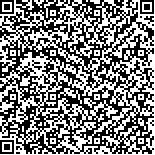| 本文已被:浏览 751次 下载 643次 |

码上扫一扫! |
| 内蒙古自治区城市土地承载力与城镇化水平的协同关系分析 |
|
王宏亮1,2,高艺宁2,3*,郝晋珉4
|
|
|
| (1.北京大学深圳研究生院 城市规划与设计学院, 广东 深圳 518055;2.自然资源部 城市国土资源监测与仿真重点实验室, 广东 深圳 518034;3.内蒙古师范大学 科技处, 呼和浩特 010022;4.中国农业大学 土地科学与技术学院, 北京 100193) |
|
| 摘要: |
| 为探寻城市土地承载力与城镇化水平之间的协同关系,以内蒙古自治区为案例区,采用TOPSIS模型对城市土地承载力与城镇化水平进行测度;在相关性分析的基础上,基于Tapio脱钩模型分析2001—2018年城市土地承载力和城镇化水平之间的协同关系。结果表明:1)2018年内蒙古自治区城市土地承载力均值为0.268,呼和浩特市、包头市和乌海市属于高土地承载力城市,其他城市土地承载力水平偏低;研究期间内蒙古自治区的城镇化水平从2001年的0.377上升至2018年的0.606。其中,人口城镇化和土地城镇化年均增幅分别为3.15%和7.57%;2)城市土地承载力与城镇化水平的相关性逐年增强,双变量莫兰指数从 2001 年的0.061上升至2018年的0.327;3)脱钩模型测度的内蒙古自治区城市土地承载力与城镇化水平之间的协同关系呈现持续协同上升趋势,协同状态由最初的“协同下降 1 级”上升至“协同上升 3 级”。尽管“十三五”期间,“呼包鄂”地区协同状态有所调整,但并非城市发展质量的降低;相反,城市土地承载力与城镇化水平的权衡关系或将带动内蒙古自治区城市发展质量的整体提升。 |
| 关键词: 协同变化 城市土地承载力 城镇化水平 脱钩模型 内蒙古 |
| DOI:10.11841/j.issn.1007-4333.2021.01.12 |
| 投稿时间:2020-01-01 |
| 基金项目:自然资源部城市国土资源监测与仿真重点实验室开放基金(KF-2019-04-027);国家重点研发计划(2019YFB2102000);内蒙古师范大学高层次引进人才科研启动经费(2019YJRC019) |
|
| Synergic relationship between urban land carrying capacity and urbanization level in Inner Mongolia Autonomous Region |
|
WANG Hongliang1,2,GAO Yining2,3*,HAO Jinmin4
|
| (1.School of Urban Planning and Design, Peking University Shenzhen Graduate School, Shenzhen 518055, China;2.Key Laboratory of Urban Natural Resource Monitoring and Simulation, Ministry of Natural Resources, Shenzhen 518034, China;3.Science and Technology Office, Inner Mongolia Normal University, Hohhot 010022, China;4.College of Land Science and Technology, China Agricultural University, Beijing 100193, China) |
| Abstract: |
| To explore the synergistic relationship between urban land carrying capacity and urbanization level, this study takes Inner Mongolia Autonomous region as study case and uses TOPSIS model to measure urban land carrying capacity and urbanization level. The results show that: 1)The average urban land carrying capacity of Inner Mongolia is 0. 268 in 2018. Hohhot, Baotou and Wuhai are high land carrying capacity cities, other cities are on low. The urbanization level increased from 0. 377 in 2001 to 0. 606 in 2018. The average annual increases of population urbanization and land urbanization are 3. 15% and 7. 57% respectively. 2)The correlation between urban land carrying capacity and urbanization level enhanced year by year, and the Bivariate Morian's index increased from 0. 061 in 2001 to 0. 327 in 2018. 3)The synergy of decoupling model measure shows a continuous synergetic upward trend, the synergy state rose from the initial “Synergy Down Level 1” to “Synergy Up Level 3”. Although during the 13th Five-Year Plan period, the coordination state of “Hohhot-Baotou-Ordos Region” was adjusted with no reduction in the quality of urban development. On the contrary, the trade-off between urban land carrying capacity and urbanization level would lead to the overall improvement of urban development quality in Inner Mongolia. |
| Key words: synergetic change urban land carrying capacity urbanization level decoupling model Inner Mongolia |